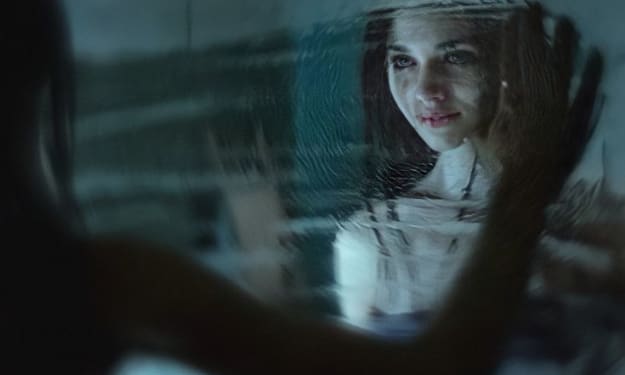Why so many people need glasses now?
Understanding the Factors Behind the Growing Demand for Eyeglasses in Modern Society

During the course of my growing up years, I noticed a change in my ability to see clearly. Gradually, I found myself unable to focus on objects beyond a certain distance from my face. Anything situated more than around 10 inches away appeared blurry. The introduction of eyeglasses transformed my world from a hazy one to a sharply defined realm. This personal experience, while somewhat inconvenient, is indicative of a broader issue that is becoming increasingly prevalent - a condition known as myopia.
Myopia, also commonly referred to as nearsightedness, has been on the rise for quite some time now. The phenomenon is not limited to any specific geographical area; in fact, it has reached epidemic proportions. This surge in myopia rates has caught the attention of researchers and health experts around the globe, leading to a quest to understand the underlying causes and potential solutions.
Let's delve into some eye-opening statistics. In the United States, where I reside, only 25% of the population suffered from myopia in 1971. Fast forward to 2004, and that number had surged to a staggering 42%. If current trends continue unabated, projections indicate that an astonishing 50% of the world's population could be afflicted by myopia by the year 2050. Notably, certain regions such as Hong Kong, Singapore, Taiwan, and South Korea are already grappling with higher-than-average myopia rates. What's even more concerning is the emergence of high myopia, characterized by a prescription strength exceeding -5. This puts individuals at significant risk of potential vision loss down the road.
Previously, experts largely attributed the need for glasses to genetics, suggesting that whether one develops myopia is primarily a matter of inherited traits. While genetics indeed play a role, the sheer rapidity of the recent surge in myopia cases suggests a significant environmental component. Something about the modern way of life appears to be contributing to the prevalence of nearsightedness.
To better understand the mechanics behind myopia, let's take a simplified look at the anatomy of the eye. Most individuals are born with eyes that are slightly shorter from front to back, causing the lens to focus images behind the retina. As we grow, our eyes also mature and change shape. Ideally, they transition to a spherical shape, allowing the lens to focus light directly onto the retina, resulting in clear vision. However, for some, the eye continues to grow, leading to an elongated shape that can focus close-up images onto the retina but causes distant images to fall short of the mark, resulting in blurry distance vision.
Dr. Seang Mei Saw, an expert in myopia epidemiology and a physician in Singapore, emphasizes that myopia is a lifelong condition. Once it sets in, it doesn't naturally regress. The pressing question then becomes: What factors are causing more and more people's eyes to grow longer than they should?
A growing body of evidence points to the way we spend our formative years—childhood and adolescence—as a significant factor in the development of myopia. This is when our eyes are growing at their fastest pace and, subsequently, when myopia tends to manifest and stabilize. While genetics remain influential, two primary environmental factors stand out: near work and indoor time.
The process of focusing on close-up objects requires muscles to contract and squeeze the lens, allowing for clear near vision. Some experts speculate that if the eyes are constantly strained due to extended periods of near work, they may elongate over time to alleviate the strain. However, this explanation is met with mixed evidence.
A more compelling argument revolves around the amount of time spent indoors. Exposure to natural outdoor light triggers the production of dopamine in the retina, a neurotransmitter crucial for regulating eye growth. When this dopamine production is insufficient, the eye's growth may become unchecked, leading to myopia. Sunlight boasts lux levels of up to 100,000 on sunny days, while indoor environments offer a mere 200 to 300 lux. The modern prevalence of electronic devices and a heavy emphasis on academic pursuits compound the issue, resulting in a generation of children who experience insufficient outdoor daylight and excessive time spent on close-up activities.
This trend is especially pronounced in East and Southeast Asia. Factors such as the demanding educational landscape and increased workload contribute to reduced outdoor time for children in these regions. The result is a generation that spends less time engaging in outdoor activities and more time engaged in tasks that encourage close-up viewing.
While needing corrective eyewear may seem like a minor inconvenience, the long-term implications of myopia can be far more serious. Professor Mark Bullimore, an optometry expert at the University of Houston, underscores the potential risks associated with excessive elongation of the eyeball. As the eye's structures stretch, they become vulnerable to disorders such as myopic macular degeneration, retinal detachment, glaucoma, and cataracts. The relationship between the extent of myopia and the risk of vision-related disorders later in life is evident.
A shift in perspective has occurred regarding myopia. Once considered primarily an optical defect, it is now regarded as a disease. Early intervention is crucial, as the severity of myopia in childhood correlates with potential complications later in life. Fortunately, there are avenues of treatment available. Multifocal soft contact lenses and glasses intentionally blur peripheral vision, potentially slowing myopia progression. Orthokeratology lenses, worn at night, reshape the cornea and can lead to clearer daytime distance vision. Atropine eye drops, which temporarily paralyze the eye's focusing muscles, also show promise in reducing myopia development.
However, the most effective approach is prevention. Encouraging children to spend more time outdoors has shown promising results in tackling myopia rates. For instance, Taiwan implemented a nationwide program that encouraged schools to dedicate two hours each day to outdoor activities. This initiative effectively reversed a four-decade-long increase in myopia rates. Singapore has also taken steps by promoting outdoor time through public education and conducting annual vision screenings in schools.
The current myopia rates may be daunting, but the potential for change is within our grasp. By recognizing the impact of modern lifestyles on eye health and implementing proactive measures, we have the opportunity to shape a future where myopia is less prevalent and its associated risks are minimized. It's time to see the world through a clearer lens, one that emphasizes the importance of outdoor time and healthy visual habits for generations to come.
Like what you read? Consider liking and subscribing for more! :)






Comments (1)
Hello, AI is permitted on Vocal. It is a Vocal policy that content created with AI is identified as such at the start of the story/article. Your article/story has many hallmarks of AI-assisted/generated content. You can find the details of the Vocal policy here: https://vocal.media/resources/an-update-from-vocal-on-ai-generated-content, Please amend your piece to be in compliance. If you are not a Vocal+ member you will need to contact Vocal here ([email protected]) and ask them to edit your story/article/poem for you. If you don’t correct this the content may be removed by Vocal and/or you may be deleted from the platform.